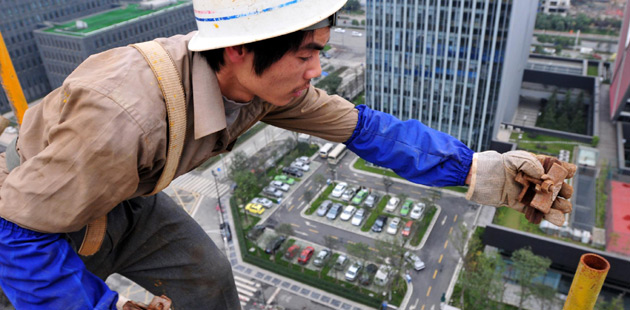Q4 growth predictions for China automotive industry
Updated: 2011-11-24 16:09
(Gasgoo.com)
|
|||||||||||
The question on everyone's minds this year was how the Chinese automotive market would hold up in the fourth quarter. Now, it looks like that answer has become very clear. Without a doubt, industry growth this year has slowed tremendously from 2010. Earlier this year, analysts from the 21st Century News Group believed that total growth in 2011 would be around 10 percent, which would be in line with those of mature markets. In other words, it was the tremendous growth the industry saw for the last two years that was out of the ordinary.
According to statistics from the China Association of Automobile Manufacturers, vehicle sales in the country for the first nine months of this year (13.63m units) have only grown 3.62 percent when compared with 2010. Passenger vehicles sales reached 10.54m units, an increase of 6.38 percent.
Gasgoo.com (Chinese) and 21st Century News Group conducted a survey on predictions for industry performance in the fourth quarter. A total of 2,153 experts in the field were polled. 39 percent of those polled believed that growth rates would linger between one and five percent, while 33 percent forecast rates of over five percent. 23 percent were more pessimistic, believing this would quarter would see negative growth occur. The decrease in the growth rate signifies that the Chinese market is entering a new stage of development.
As far as the Chinese market is concerned, September is traditionally a strong month. However, there hasn't been an explosion in sales so far this year. It seems that the more conservative predictions made in the start of the year are now looking more and more realistic. In a similar survey conducted at that time, only 18 percent believed that growth would remain between zero and five percent, while even less predicted negative growth would occur. The vast majority of respondents, and indeed mainstream opinion at the time, forecast growth between ten and 15 percent.
However, following continually disappointing sales results, especially those of April, which saw the first monthly fall in sales for over two years, notions of rapid growth coming to a halt have become more and more mainstream. In a survey held in May, 47 percent of 3,812 experts polled predicted growth of under five percent in the latter half of the year. In that same survey, 62 percent of respondents believed that fourth quarter growth rates would be under five percent.
Despite that most believe that overall growth rates for this year will be at least even if not slightly positive, the chance of negative growth occurring in the fourth quarter is quite large. This is only compounded by the phasing out of certain government approved subsidies.
When asked what they thought about the slip in sales as of late, 82 percent of respondents believed that this was a very normal occurrence. While the Chinese market is considered to be very complex, factors influencing growth can be divided into broad categories: internal factors, namely fluctuations in demand; external factors, such as government policies or buyer environment; and indirect factors caused by interactions between the two. The explosive growth in sales in 2009 and 2010 was due largely to an increase in living standards for a large number of citizens, causing demand for automobiles to rise suddenly. This tendency was further aided by policies put out by the government to stimulate the economy in light of the global economic crisis. While directly causing growth, these policies also indirectly caused another increase in sales, with many consumers, who may not have bought vehicles otherwise, choosing to make a purchase prior to the withdrawal of said policies. With those policies now having been phased out and demand generally having already peaked, its only natural that the market would follow in suit.
While market demand having past its peak and the phasing out of stimulatory policies are believed to be the key factors by a majority of survey respondents, there are still those who believe that currency appreciation, rising manufacturing costs and the introduction of policies restricting vehicle purchases were also major causes behind the weakening sales performance this year.
Despite the market this year onwards being drastically different from that of 2009 to 2010, a majority of people, whether they are industry experts or manufacturers and dealers, still hold an optimistic outlook for the future. As the number of vehicles on Chinese roads is comparatively less than other markets, there is still a lot of room for development, which may have been cut short had sales continued to increase as fast as they were before. Whether looking at events from a economic or a sociological viewpoint, over 100 percent growth is not only impossible to sustain, it is also unfavorable, as the costs it brings are very high. The increasingly bad traffic, tightening of energy resources and environmental problems seen today are all proof of this.








